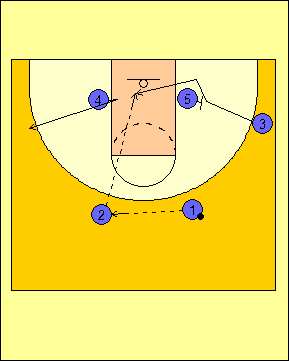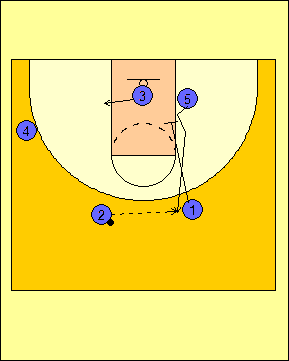|

Basketball Coaching DVD's at Championship Productions
FLEX OFFENSE
Back in the 1970's, an offense was developed as an even-guard front version of
the shuffle offense known today as the Flex offense. This offense has found its success replicated in the
international, professional, collegiate, and amateur ranks as an offense that is
difficult to stop and takes advantage of the defense's mistakes.
Advantages of the Flex Offense
The Flex offense is difficult to guard when the offense is able to make the
guard-to-guard pass on top. This is because of how difficult the
screen-the-screener action is to defend. Reversing the basketball makes
defenses work and the guard-to-guard pass must be denied. When this
happens, there are several counters that the offense can use to take advantage
of a single-minded defense.
The second aspect of the Flex offense that is advantageous is that it can be
incorporated as a quick hitter or as an inbounds play. Several teams have
found how they can flow into the offense and use it to execute the offense,
especially the baseline cut.
Third, there is a counter for everything. If the defense takes something
away, the way the defense plays against the offense can be exploited for a big
score. As mentioned earlier, if the defense tries to take away one thing,
the offense has an answer.
Disadvantages of the Flex Offense
In most cases, the offense requires that all five players play all five
positions. While there are variations of the Flex offense that can be run
to compensate for this, the primary way that the Flex offense is run requires
all players to be capable cutters, screeners, passers, and jump shooters.
All of these things have to be worked on during practice.
Another disadvantage is that the offense, because its patterned, players can
become so focused on trying to get the basic movement to work that they can
forget about the counters. It is important that the players be put in
positions in practice where they are forced to run the counters against a live
defense.
Basic Movement
Diagram 1 shows the first action in the basic movement of the Flex offense.
On any pass from guard to guard, the post on the first side of the floor sets a
back screen for the player in the corner. Meanwhile, the post on the side
opposite the occupied corner will pop out to the new ball-side corner.
Diagram 2 shows the second part of the basic movement. Once the cutter
uses the screen the player who made the guard-to-guard pass in the first diagram
will set a down screen for the screener from the first diagram. This
assumes that the defense did not switch the first screen for which there is a
counter that will be presented later in the article.

Diagram
1 |

Diagram
2 |
Diagrams 3 and 4 show the basic movements of the Flex offense going from the
second side to the third side of the floor.

© 2010-2017 Alan Peel Enterprises
|